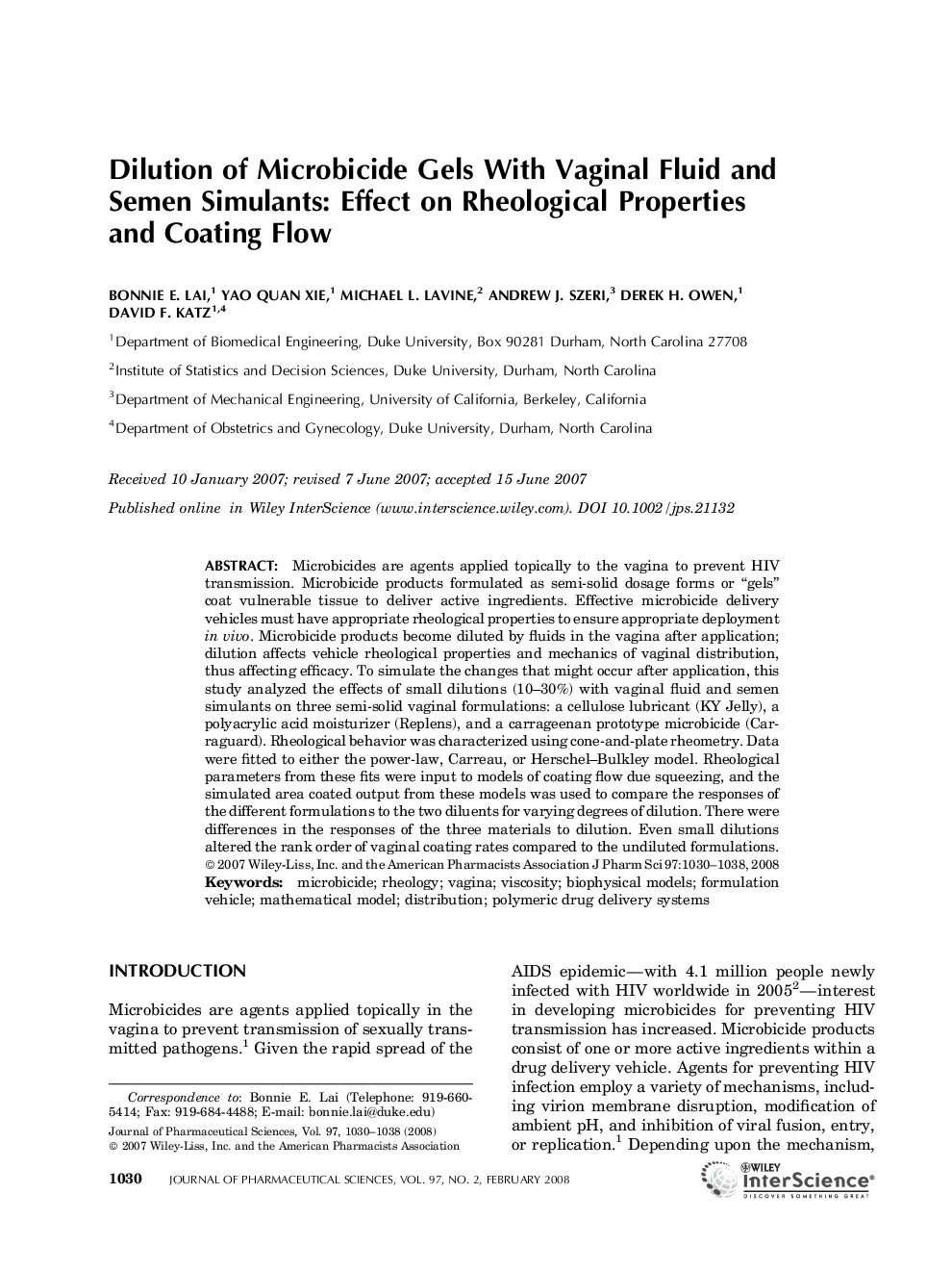| Article ID | Journal | Published Year | Pages | File Type |
|---|---|---|---|---|
| 2487461 | Journal of Pharmaceutical Sciences | 2008 | 9 Pages |
Abstract
Microbicides are agents applied topically to the vagina to prevent HIV transmission. Microbicide products formulated as semi-solid dosage forms or “gels” coat vulnerable tissue to deliver active ingredients. Effective microbicide delivery vehicles must have appropriate rheological properties to ensure appropriate deployment in vivo. Microbicide products become diluted by fluids in the vagina after application; dilution affects vehicle rheological properties and mechanics of vaginal distribution, thus affecting efficacy. To simulate the changes that might occur after application, this study analyzed the effects of small dilutions (10-30%) with vaginal fluid and semen simulants on three semi-solid vaginal formulations: a cellulose lubricant (KY Jelly), a polyacrylic acid moisturizer (Replens), and a carrageenan prototype microbicide (Carraguard). Rheological behavior was characterized using cone-and-plate rheometry. Data were fitted to either the power-law, Carreau, or Herschel-Bulkley model. Rheological parameters from these fits were input to models of coating flow due squeezing, and the simulated area coated output from these models was used to compare the responses of the different formulations to the two diluents for varying degrees of dilution. There were differences in the responses of the three materials to dilution. Even small dilutions altered the rank order of vaginal coating rates compared to the undiluted formulations. © 2007 Wiley-Liss, Inc. and the American Pharmacists Association J Pharm Sci 97:1030-1038, 2008
Keywords
Related Topics
Health Sciences
Pharmacology, Toxicology and Pharmaceutical Science
Drug Discovery
Authors
Bonnie E. Lai, Yao Quan Xie, Michael L. Lavine, Andrew J. Szeri, Derek H. Owen, David F. Katz,
